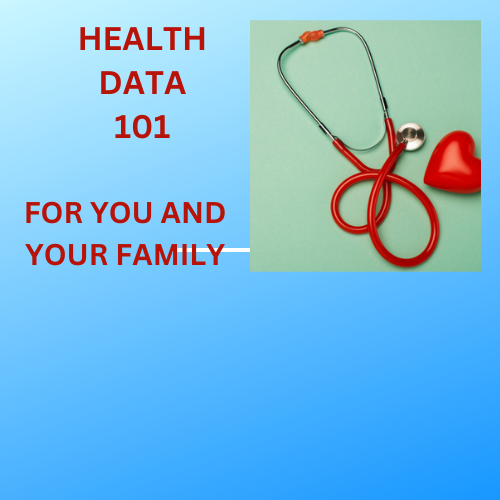Health Data 101

Data Security and Safe Data Holding in Healthcare
Data security and the safe holding of information are critical in the healthcare industry due to the sensitive nature of patient information and the legal requirements for protecting this data. Ensuring data security involves implementing robust measures to protect against data breaches, unauthorized access, and other cyber threats. Here’s an overview of key aspects related to data security and safe data holding in healthcare:
Key Components of Data Security in Healthcare
-
Confidentiality, Integrity, and Availability (CIA Triad):
- Confidentiality: Ensuring that patient information is accessible only to authorized individuals.
- Integrity: Maintaining the accuracy and completeness of patient data.
- Availability: Ensuring that data is accessible to authorized users when needed.
-
Regulatory Compliance:
- Compliance with laws such as the Health Insurance Portability and Accountability Act (HIPAA) in the United States, the General Data Protection Regulation (GDPR) in Europe, and other regional regulations is essential. These regulations set standards for the protection of health information and mandate specific security measures.
-
Access Control:
- Implementing strict access controls to ensure that only authorized personnel can access sensitive information. This includes using user authentication methods such as passwords, biometrics, and multi-factor authentication (MFA).
-
Data Encryption:
- Encrypting data both at rest and in transit to protect it from unauthorized access. Encryption ensures that even if data is intercepted or accessed illegally, it remains unreadable without the appropriate decryption key.
-
Network Security:
- Using firewalls, intrusion detection/prevention systems (IDS/IPS), and secure network architectures to protect data from cyber threats. Regularly updating and patching systems to address vulnerabilities is also crucial.
-
Regular Audits and Monitoring:
- Conducting regular security audits and continuous monitoring of systems to detect and respond to security incidents promptly. Audits help identify potential vulnerabilities and ensure compliance with security policies.
-
Data Backup and Recovery:
- Implementing robust data backup solutions and disaster recovery plans to ensure data can be restored in case of loss or corruption. Regular backups should be stored securely and tested to ensure they are functional.
-
Physical Security:
- Protecting physical access to servers, data centers, and other critical infrastructure. This includes using security measures such as access badges, surveillance cameras, and secure facilities.
-
Training and Awareness:
- Providing regular training and awareness programs for healthcare staff to ensure they understand data security policies and best practices. Educating employees about phishing attacks, social engineering, and other common threats can help prevent security breaches.
Be part of Health Data 101.... Hospital and patient management is a crucial aspect of healthcare that involves the systematic organization and coordination of healthcare services to ensure efficient delivery of care.
Earn as One country One AGENT.
Contact for details: Email: sappertekinc@gmail.com
Absolutely risk free and FREE for download... App link: https://www.amazon.com/gp/product/B0D514TH5S
- Questions and Answers
- Opinion
- Motivational and Inspiring Story
- Technology
- Live and Let live
- Focus
- Geopolitics
- Military-Arms/Equipment
- Güvenlik
- Economy
- Beasts of Nations
- Machine Tools-The “Mother Industry”
- Art
- Causes
- Crafts
- Dance
- Drinks
- Film/Movie
- Fitness
- Food
- Oyunlar
- Gardening
- Health
- Home
- Literature
- Music
- Networking
- Other
- Party
- Religion
- Shopping
- Sports
- Theater
- Health and Wellness
- News
- Culture

